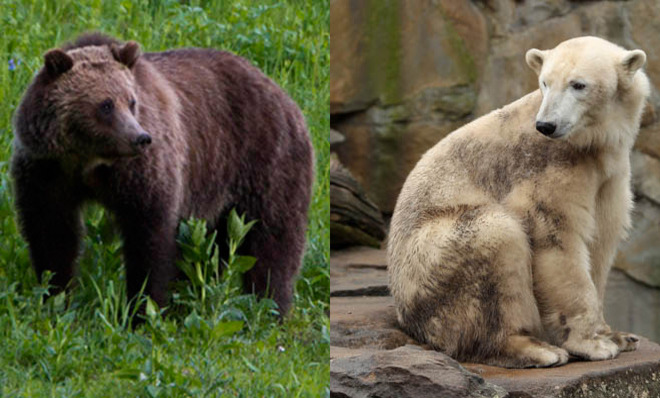Why don't different species have sex more often?
The Western Mojave's Capulets and Montagues offer some clues

Desert woodrats and Bryant's woodrats are closely related. So close, in fact, that the two species can interbreed and produce healthy hybrid offspring. What has scientists puzzled is why they don't do it more often.
Both species are members of the genus Neotoma, collectively known as the packrats. They diverged, probably because of geographic isolation, some 1.6 million years ago. Today, the two species are neighbors again in the American West, and despite their genetic distinctions, they can and do mate where their territories butt against each other and produce hybrid rats.
In these hybrid zones where the two species overlap, around 13 percent of the population have genes that suggest interbreeding. Why, biologist Quinn Shurtliff, wondered, weren't there more?
The Week
Escape your echo chamber. Get the facts behind the news, plus analysis from multiple perspectives.

Sign up for The Week's Free Newsletters
From our morning news briefing to a weekly Good News Newsletter, get the best of The Week delivered directly to your inbox.
From our morning news briefing to a weekly Good News Newsletter, get the best of The Week delivered directly to your inbox.
One of the main things that prevents hybridization is "hybrid incompatibility": Hybrids, even those produced by closely related species, are often inviable or, if they live, are sterile (like mules). The rats have already gotten over this genetic hurdle, so what keeps them separated and prevents them from merging into one hybrid species?
Shurtliff and his team went to one of these hybrid zones in California's Kelso Valley, where coastal oak forests and scrubland meet the Western Mojave Desert, and spent three summers trapping and studying the rats. They found a few factors that create a biological wall between the two species and keep them from merging more fully.
First, the two rats make their homes in different habitats, even where they mingle and live just a few feet away from each other at the boundaries between their territories. The thin border is still a sharp ecological divide, and the Bryant's woodrats tend to stick to the boulder-strewn hillsides, while the desert woodrats are more at home in the sand and scrub of the valley below.
Although both types of habitat are theoretically available to both species, and there aren't any physical barriers between them, they remain largely segregated. The researchers think this is either because the rats have strong preferences for one type of habitat, or there are barriers to using the other one, like lack of nesting sites or competition from the other species. Either way, it keeps most of the rats from crossing the invisible line long enough to mate or raise their young.
A free daily email with the biggest news stories of the day – and the best features from TheWeek.com
There are also some personality conflicts going on. The researchers found that desert woodrat females will rarely interact with males from the other species because of their larger size and more aggressive nature, which keeps interbreeding from being as high as it could be.
Finally, once hybrids are born, they tend not to make it to adulthood as often as rats from the two parent species, keeping their numbers down. The problem seems to be that, as in-betweeners, there's really no place for them to go in either species' territory. The researchers think that they may not be aggressive enough to compete with purebred Bryant's woodrat males for dens and territory in the hills, and aren't able to acclimate to desert life in the valley. This could lead them to wander off in search of greener pastures, leaving them out of range of females to mate with and exposing them to predators.
Because the rats live at such a sharp ecological divide and there's little transitional habitat for the hybrids to call home, it looks like the story of these woodrats will continue to be a tale of two species. It might not stay like that for long, though. As the climate changes, physical and ecological barriers are altered or disappear, and species change or expand their ranges. This can bring once-isolated species into contact, with the potential for mating and hybridization.
In the Arctic, melting ice has made way for inter-species mating between polar and grizzly bears and harbor and Dall's porpoises. Further south, southern flying squirrels in Ontario, Canada expanded their range after a series of warm winters, increasing their contact with a related northern species. They, too, produced hybrids. Similar changes in the areas where the woodrats live may break down the walls between them, too.
Meanwhile, if the various hybrids that have recently been discovered, and those that might be on the way, can reproduce (a "grolar" bear examined in 2010 was a second-generation hybrid, suggesting the hybrid bears, at least, are fertile in the wild), the animal kingdom could become more and more of a melting pot.
-
 In Suriname, the spectre of Dutch slave trade lingers
In Suriname, the spectre of Dutch slave trade lingersUnder the Radar Dutch royal family visit, the first to the South American former colony in nearly 50 years, spotlights role of the Netherlands in transatlantic trade
-
 Political cartoons for December 7
Political cartoons for December 7Cartoons Sunday’s political cartoons include the Trump-tanic, AI Santa, and the search for a moderate Republican
-
 Trump’s poll collapse: can he stop the slide?
Trump’s poll collapse: can he stop the slide?Talking Point President who promised to ease cost-of-living has found that US economic woes can’t be solved ‘via executive fiat’